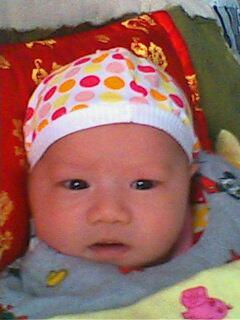| Which is better? Simplified Chinese Character or Traditional Chinese? | |
|---|---|
| Apr 19, 2007 19:58 | |
 | "I can see that 50% (at least) of the common people can't read all the simplified Chinese. So I really have no idea how to make them AT LEAST to learn traditional Chinese." Yes, of course. There are so many characters in Chinese. But we don't need to learn all of them. Common ones are already enough. So is the traditional Chinese. We can learn some common ones. And that's enough. And according to your logic, we have to learn all the simplified Chinese, and then we CAN learn English/Spanish/Russian or another useful foreign language?? |
| Apr 19, 2007 20:01 | |
 | 1: I'm sorry, but you're statement could easily have been interpreted as racist. 2: Racism does not have to be directed at one "race" to be racist. Most racists I know hate everybody who is of a different "race" from them. 3: Casting aspersions on my knowledge of any language is not a valid debating tactic. 4: Moving on: Why compare China with developed countries? China is not a developed country, China's education system is still quite poorly developed and many Chinese children still do not have access to education. And many of those who do have access to education only have access to very poor education. This is why China's literacy rate is still "only" in the region of 85%. Let's compare Hong Kong and Taiwan with developed countries, since they are the most developed regions of China: All of a sudden we see comparable literacy rates. How could this be? Hong Kong and Taiwan still use traditional characters! Clearly literacy rates have more to do with access to and quality of education than the complexity of the writing system. Now, clearly you don't understand how literacy is defined or how literacy rates are measured. The survey I cited defined the adult literacy rate as the percentage of the population over the age of 15 who could read and write a simple sentence about themselves with understanding. That's a much lower standard than you seem to be applying. I believe the Chinese government standard is the ability to read and write the 1500 most commonly used characters. Those characters make up somewhere in the region of 90% of all Chinese texts. So using the literacy rate from the survey I cited and the Chinese government's standard for literacy, we can safely assume that roughly 85% of Chinese people aged over 15 can read 90% of what is written in Renmin Ribao. Let's get this straight: Literacy is not the ability to read every single word or Chinese character. Nobody can do that. Even in developed countries, very, very many people have very basic reading and writing skills. Just after I graduated I did a course in Adult Literacy Tutoring, and some of the things I learned in that course were surprising, shocking, even: In New Zealand, which for many, many years had literacy and remedial reading programmes that were the envy of the world, 30% of the adult population were functionally illiterate. That was 70% of unemployed people. These people were not totally illiterate, but their reading and writing skills were so poor they struggled with things as "simple" as job applications or welfare application forms. Given the definition of literacy used by the survey I cited, we can assume that the same applies to all countries- many of those considered literate actually have very basic literacy skills and would probably struggle to read their hometown's newspaper. That is why you're "example" of a 7 year old Russian being able to read anything written in Russian while a 20 year old Chinese struggles with Renmin Ribao is irrelevant. |
| Apr 19, 2007 22:53 | |
 | Well, let us see: "1: I'm sorry, but you're statement could easily have been interpreted as racist." No, impossible. A CULTURAL DISCOURSE can not be interpreted like this. And also - in my profile you can see that I am a Communist, so the Hitlerist's, KKK's and Skinhead's theories are far away from me. My two grandfathers were good fighters against the axis Rome-Berlin-Tokyo. And I am talking often against the Skinheads here, so no one can interprete me like a racist. "2: Racism does not have to be directed at one "race" to be racist. Most racists I know hate everybody who is of a different "race" from them." You don't know me. And I am a scientist (master degrei in philosophy). My major is Anthropological Philosophy, so I know very good this matter and it is impossible to be such an uneducated one like this your well-known guys. "3: Casting aspersions on my knowledge of any language is not a valid debating tactic." Yes, when have no enough argumentums, plese do not use "racism", because the clever people here know the RIGHT definition of this and know my love to the Chinese Communist Party, so it is not succesful tactics. "4: Moving on: Why compare China with developed countries? China is not a developed country, China's education system is still quite poorly developed and many Chinese children still do not have access to education. And many of those who do have access to education only have access to very poor education. This is why China's literacy rate is still "only" in the region of 85%. " You mean FYR-Macedonia is a developed country?! No, it is not. "Let's compare Hong Kong and Taiwan with developed countries, since they are the most developed regions of China: All of a sudden we see comparable literacy rates. How could this be? Hong Kong and Taiwan still use traditional characters! Clearly literacy rates have more to do with access to and quality of education than the complexity of the writing system." NO PROBLEM! From the CIA Factbook: TAIWAN Literacy: definition: age 15 and over can read and write total population: 96.1% And now some not so developed countries, BUT WITH DEVEOPED ALPHABETS: AZERBAIJAN (Former Soviet Union): Literacy: definition: age 15 and over can read and write total population: 98.8% MOLDOVA (former Soviet Union) definition: age 15 and over can read and write total population: 99.1% MONGOLIA definition: age 15 and over can read and write total population: 97.8% To be continued... |
| Apr 19, 2007 23:21 | |
 | "Now, clearly you don't understand how literacy is defined or how literacy rates are measured." Oh, it is easy. If I can understand Hegel, believe me, the definition " age 15 and over can read and write" is just piece of cake for me! About the measure I will tell you how: A Turkish child will never ask me how to right "NECK", but an over 20 years old girl, already asked about it. So long about the measure... "The survey I cited defined the adult literacy rate as the percentage of the population over the age of 15 who could read and write a simple sentence about themselves with understanding." Dear God, some Chinese can't right even few words without mistake and you're talking about a SENTENCE! :D "That's a much lower standard than you seem to be applying. I believe the Chinese government standard is the ability to read and write the 1500 most commonly used characters. Those characters make up somewhere in the region of 90% of all Chinese texts. So using the literacy rate from the survey I cited and the Chinese government's standard for literacy, we can safely assume that roughly 85% of Chinese people aged over 15 can read 90% of what is written in Renmin Ribao." Good hope! "Let's get this straight: Literacy is not the ability to read every single word or Chinese character. Nobody can do that. Even in developed countries, very, very many people have very basic reading and writing skills. Just after I graduated I did a course in Adult Literacy Tutoring, and some of the things I learned in that course were surprising, shocking, even: In New Zealand, which for many, many years had literacy and remedial reading programmes that were the envy of the world, 30% of the adult population were functionally illiterate." CAN YOU IMAGINE WHAT WILL BE THE % IF THEY HAVE TO LEARN AT LEAST 1500 "pictures", not 26 letters? T"hat is why you're "example" of a 7 year old Russian being able to read anything written in Russian while a 20 year old Chinese struggles with Renmin Ribao is irrelevant." It is strange how this example get to be irrelevant now, but it was relevant before, when you thought that you are right. :) YOU MADE MY DAY :) ANOTHER FOOD FOR THINKING: -WHY CHINESE CAN LEARN THE 33 RUSSIAN LETTERS FOR 1 WEEK AND CAN START READ RUSSIAN FOR 2 WEEKS, BUT RUSSIANS, ENGLISHMEN, MONGOLIANS CAN'T LEARN TO READ CHINESE EVEN FOR 2 MONTHS? OR JUST: WHICH IS EASIER TO LEARN: "YXO" (In Russian means "EAR") or "耳朵"(in Chinese, the same word). ********** In the topic below EVEN HAN-CHINESE think that their language is difficult, why here we have to read that it is easy, average and without any troubles for the learners? |
| Apr 20, 2007 01:04 | |
 | Ok, guys, you both are great posters. I'm very happy to see the hot discussion here. But, be calm, ok? Anyway, thanks for your sharing. |
| Apr 20, 2007 08:27 | |
 | We are friendly! May be because of some basic rhetoric |
| Apr 20, 2007 21:49 | |
 | Azerbaijan, Moldova, Macdonia and Mongolia.... hmm.... all formerly socialist countries whose governments, at least during some period in the past, put a lot of effort and resources into education. Cuba also has a very high literacy rate, and for the same reason. One could argue these examples prove my assertion that literacy rates have more to do with access to education than the writing system. "WHY CHINESE CAN LEARN THE 33 RUSSIAN LETTERS FOR 1 WEEK AND CAN START READ RUSSIAN FOR 2 WEEKS, BUT RUSSIANS, ENGLISHMEN, MONGOLIANS CAN'T LEARN TO READ CHINESE EVEN FOR 2 MONTHS?" There are many reasons for this. Chinese characters are only one of them. Anyway, having studied Russian (as I believe you have, too), I know as well as you do that learning all 33 letters does not make one literate. It's only one step in the process of becoming literate. I can "read" any Russian text in that I can sound out the words, but that does not mean I understand any of it- and it's been so long since I studied Russian I probably wouldn't understand. Besides, I already agreed that it is more difficult to learn Chinese characters, but I don't see how this extra difficulty presents a real barrier to literacy. It takes more time to learn to read Chinese, but still, the majority of Chinese learn to read. "CAN YOU IMAGINE WHAT WILL BE THE % IF THEY HAVE TO LEARN AT LEAST 1500 "pictures", not 26 letters?" All other things (access to and quality of education, in particular) being equal, the statistics would probably be the same. Anyway, I still believe roughly 85% of Chinese people can understand roughly 90% of Renmin Ribao, I have never seen anything to cause me to doubt this, and you have offered no evidence that this is not true. "In the topic below EVEN HAN-CHINESE think that their language is difficult" Everybody thinks their language is difficult. My experience suggests that all languages are equally difficult, the difference is only in the particular nature of the difficulties. |
| Apr 21, 2007 00:53 | |
 | I skip over three pages here to find place to say, I use simplified Chinese, but I like traditional Chinese also though I can not recognize some of them. My opinion is that to master the two writting systems is a better way out. LOL |
| Apr 21, 2007 22:52 | |
 | Yeah, sorry about that, CandyQ, I guess we dragged this thread quite some way off topic. |
| Apr 22, 2007 05:00 | |
 | "Azerbaijan, Moldova, Macdonia and Mongolia.... hmm.... all formerly socialist countries whose governments, at least during some period in the past, put a lot of effort and resources into education." GOOD POINT! IT MAKES ME TO FIND ANOTHER EXAMPLE: FORMERLY NON-SOCIALISTIC COUNTRIES, BUT WITH DEVELOPED WRITTING SYSTEMS :) MY PLEASURE: 1.Cyprus definition: age 15 and over can read and write total population: 97.6% male: 98.9% female: 96.3% (2003 est.) 2. Greenland definition: age 15 and over can read and write total population: 100% male: 100% female: 100% (2001 est.) 3. Guam definition: age 15 and over can read and write total population: 99% male: 99% female: 99% (1990 est.) 4.Trinidad and Tobago definition: age 15 and over can read and write total population: 98.6% male: 99.1% female: 98% (2003 est.) ... "Cuba also has a very high literacy rate, and for the same reason." If Cuba have to use 8 000 + characters instead of the simple Latin, the situation will be not so good. "One could argue these examples prove my assertion that literacy rates have more to do with access to education than the writing system." Both. Education is education. BUT IT IS MUCH EASIER TO LEARN HOW TO COMBINE 26 - 50 letters than 5 000 - 9 000 "pictures". Simply -Maths... "There are many reasons for this. Chinese characters are only one of them. Anyway, having studied Russian (as I believe you have, too), I know as well as you do that learning all 33 letters does not make one literate." WHY NOT? RUSSIAN IS MOSTLY PHONETIC. ONLY "O" depends of the stress you can pronounce like "WO" or like "AH" and sometimes the letter "4" ("CH" or "SH'). Almost everything else is 1 to 1. LOOK HOW EASY IT IS: K = K H = N I/I = YI _ | = G A = AH When you combine them together you will receive a "KNYIGAH". No changes. It means "book". Anyway it is very funny if you think that to start read Russian is not easier than to start read Chinese. Every single Russian and Chinese will show you the terms of their children start to be able to read books/ newspapers. |
Post a Reply to: Which is better? Simplified Chinese Character or Traditional Chinese?









 Copyright © 1998-2025 All rights reserved.
Copyright © 1998-2025 All rights reserved.